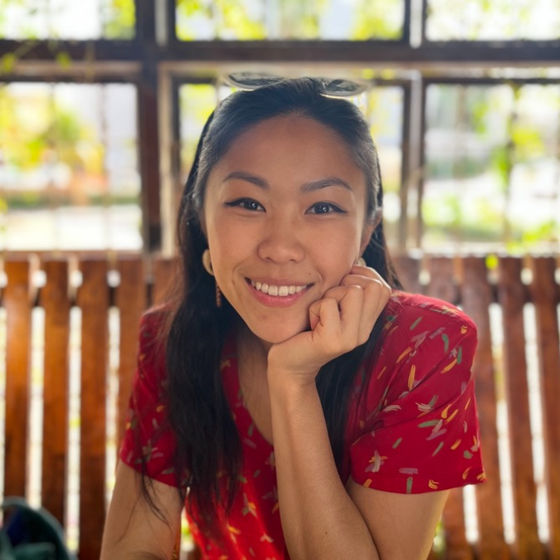Visual Design: The Ultimate Guide
How This Course Will Help Your Career
What You’ll Learn
What good design is and how to create it
How to effectively use visual design elements and principles in your work
What color theory is and how to use it effectively
How to confidently use color to improve your work
The importance of type and the power of visual inflection
How to design with type and create effective communication
The importance of grid systems and how they provide order to our everyday lives
How to use grid systems to improve your work
In this course, you will gain a holistic understanding of visual design and increase your knowledge of visual principles, color theory, typography, grid systems and history. You’ll also learn why visual design is so important, how history influences the present, and practical applications to improve your own work. These insights will help you to achieve the best possible user experience.
In the first lesson, you’ll learn the difference between visual design elements and visual design principles. You’ll also learn how to effectively use visual design elements and principles by deconstructing several well-known designs.
In the second lesson, you’ll learn about the science and importance of color. You’ll gain a better understanding of color modes, color schemes and color systems. You’ll also learn how to confidently use color by understanding its cultural symbolism and context of use.
In the third lesson, you’ll learn best practices for designing with type and how to effectively use type for communication. We’ll provide you with a basic understanding of the anatomy of type, type classifications, type styles and typographic terms. You’ll also learn practical tips for selecting a typeface, when to mix typefaces and how to talk type with fellow designers.
In the final lesson, you’ll learn about grid systems and their importance in providing structure within design. You’ll also learn about the types of grid systems and how to effectively use grids to improve your work.
You’ll be taught by some of the world’s leading experts. The experts we’ve handpicked for you are the Vignelli Distinguished Professor of Design Emeritus at RIT R. Roger Remington, author of “American Modernism: Graphic Design, 1920 to 1960”; Co-founder of The Book Doctors Arielle Eckstut and leading color consultant Joann Eckstut, co-authors of “What Is Color?” and “The Secret Language of Color”; Award-winning designer and educator Mia Cinelli, TEDx speaker of “The Power of Typography”; Betty Cooke and William O. Steinmetz Design Chair at MICA Ellen Lupton, author of “Thinking with Type”; Chair of the Graphic + Interactive communication department at the Ringling School of Art and Design Kimberly Elam, author of "Grid Systems: Principles of Organizing Type.”
Throughout the course, we’ll supply you with lots of templates and step-by-step guides so you can go right out and use what you learn in your everyday practice.
In the “Build Your Portfolio Project: Redesign,” you’ll find a series of fun exercises that build upon one another and cover the visual design topics discussed. If you want to complete these optional exercises, you will get hands-on experience with the methods you learn and in the process you’ll create a case study for your portfolio which you can show your future employer or freelance customers.
You can also learn with your fellow course-takers and use the discussion forums to get feedback and inspire other people who are learning alongside you. You and your fellow course-takers have a huge knowledge and experience base between you, so we think you should take advantage of it whenever possible.
You earn a verifiable and industry-trusted Course Certificate once you’ve completed the course. You can highlight it on your resume, your LinkedIn profile or your website.
Gain an Industry-Recognized UX Course Certificate
Use your industry-recognized Course Certificate on your resume, CV, LinkedIn profile or your website.

Our courses and Course Certificates are trusted by these industry leaders:

Is This Course Right for You?
This is a beginner-level course suitable for anyone who wants to understand the foundations of visual design and improve the quality of their work. This course is particularly valuable for:
UX designers, UI designers, visual designers and graphic designers looking to increase their visual design knowledge and gain practical skills to improve their work.
Junior designers who want to progress faster in their career by enhancing their visual design skills.
Students keen to understand the importance of visual design, learn its history and integrate foundational principles into their work.
Anyone who is interested in visual design principles that can be applied to all types of products.
Learn and Work with a Global Community of Designers
When you take part in this course, you’ll join a global community and work together to improve your skills and career opportunities. Connect with helpful peers and make friends with like-minded individuals as you push deeper into the exciting and booming industry of creativity and design. You will have the opportunity to share ideas, learn from your fellow course participants and enjoy the social aspects afforded by our open and friendly forum.
Course Overview: What You'll Master
- Each week, one lesson becomes available.
- There's no time limit to finish a course. Lessons have no deadlines.
- Estimated learning time: 17 hours 34 mins spread over 7 weeks .
Lesson 0: Welcome and Introduction
-
0.1: Welcome and Introduction (5 mins)
-
0.2: Build Your Portfolio (8 mins)
-
0.3: Let Our Community Help You (1 min)
-
0.4: How to Earn Your Course Certificate (16 mins)
-
0.5: Expand Your Network and Grow Your Skills in Our Online Forums (5 mins)
-
0.6: Global Skills, Local Jobs: Build Your Network in Your Area (1 min)
-
0.7: Gain Timeless Knowledge Through Courses From The Interaction Design Foundation (21 mins)
-
0.8: Mandatory vs. Optional Lesson Items (7 mins)
-
0.9: A Mix Between Video-Based and Text-Based Lesson Content (6 mins)
Lesson 1: Visual Principles
-
1.1: Welcome and Introduction (7 mins)
-
1.2: What is Good Design? (22 mins)
-
1.3: Conversations (6 mins)
-
1.4: What are Visual Design Elements? (39 mins)
-
1.5: What are Visual Design Principles? (48 mins)
-
1.6: Conversations (6 mins)
-
1.7: The Work of Artist Paul Klee (39 mins)
-
1.8: Build Your Portfolio: Album Cover (8 mins)
-
1.9: Congratulations and Recap (6 mins)
Lesson 2: Color Theory
-
2.1: Welcome and Introduction (7 mins)
-
2.2: What is Color? (22 mins)
-
2.3: Why Do We See Color? (56 mins)
-
2.4: Understand Color Theory (46 mins)
-
2.5: What are Color Modes? (25 mins)
-
2.6: What are Color Systems? (25 mins)
-
2.7: Why Do Colors Change? (25 mins)
-
2.8: How To Confidently Use Color (35 mins)
-
2.9: Understand Color Symbolism (37 mins)
-
2.10: Conversations (6 mins)
-
2.11: What Color is the Dress? (10 mins)
-
2.12: Build Your Portfolio: Album Cover (9 mins)
-
2.13: Congratulations & Recap (6 mins)
Lesson 3: Typography
-
3.1: Welcome and Introduction (7 mins)
-
3.2: What is Type? (30 mins)
-
3.3: Why Does Type Matter? (18 mins)
-
3.4: Conversations (6 mins)
-
3.5: What Is Type Anatomy? (20 mins)
-
3.6: Carved in Stone (20 mins)
-
3.7: How to Talk Type (40 mins)
-
3.8: What Are Type Grids? (56 mins)
-
3.9: How to Design with Type (47 mins)
-
3.10: Build Your Portfolio: Album Cover (9 mins)
-
3.11: Congratulations & Recap (6 mins)
Lesson 4: Grid Systems
-
4.1: Welcome and Introduction (7 mins)
-
4.2: What Are Grid Systems? (26 mins)
-
4.3: Types of Grid Systems (48 mins)
-
4.4: Conversations (6 mins)
-
4.5: How To Use Grid Systems (37 mins)
-
4.6: What Are Typographic Systems? (39 mins)
-
4.7: The Work of Designer Massimo Vignelli (31 mins)
-
4.8: Conversations (6 mins)
-
4.9: The Map (42 mins)
-
4.10: Build Your Portfolio: Album Cover (8 mins)
-
4.11: Build Your Portfolio: Redesign—Bad Design, Begone! (9 mins)
-
4.12: Congratulations & Recap (6 mins)
Lesson 5: Course Certificate, Final Networking, and Course Wrap-up
How Others Have Benefited

Denice Zhu, United States
“The course was helpful in setting a foundation and providing opportunities for hands-on practice.”

Rakshith, India
“Easy to understand for a person who has zero knowledge about design.”

Vince Mendella, Canada
“The knowledge of the instructors and the content were superb. I learned a lot, and it built on what I learned over 30 years ago in design school.”
How It Works
-
Take online courses by industry experts
Lessons are self-paced so you'll never be late for class or miss a deadline.
-
Get a Course Certificate
Your answers are graded by experts, not machines. Get an industry-recognized Course Certificate to prove your skills.
-
Advance your career
Use your new skills in your existing job or to get a new job in UX design. Get help from our community.
Start Advancing Your Career Now
Join us to take “Visual Design: The Ultimate Guide”. Take other courses at no additional cost. Make a concrete step forward in your career path today.
Advance my career now